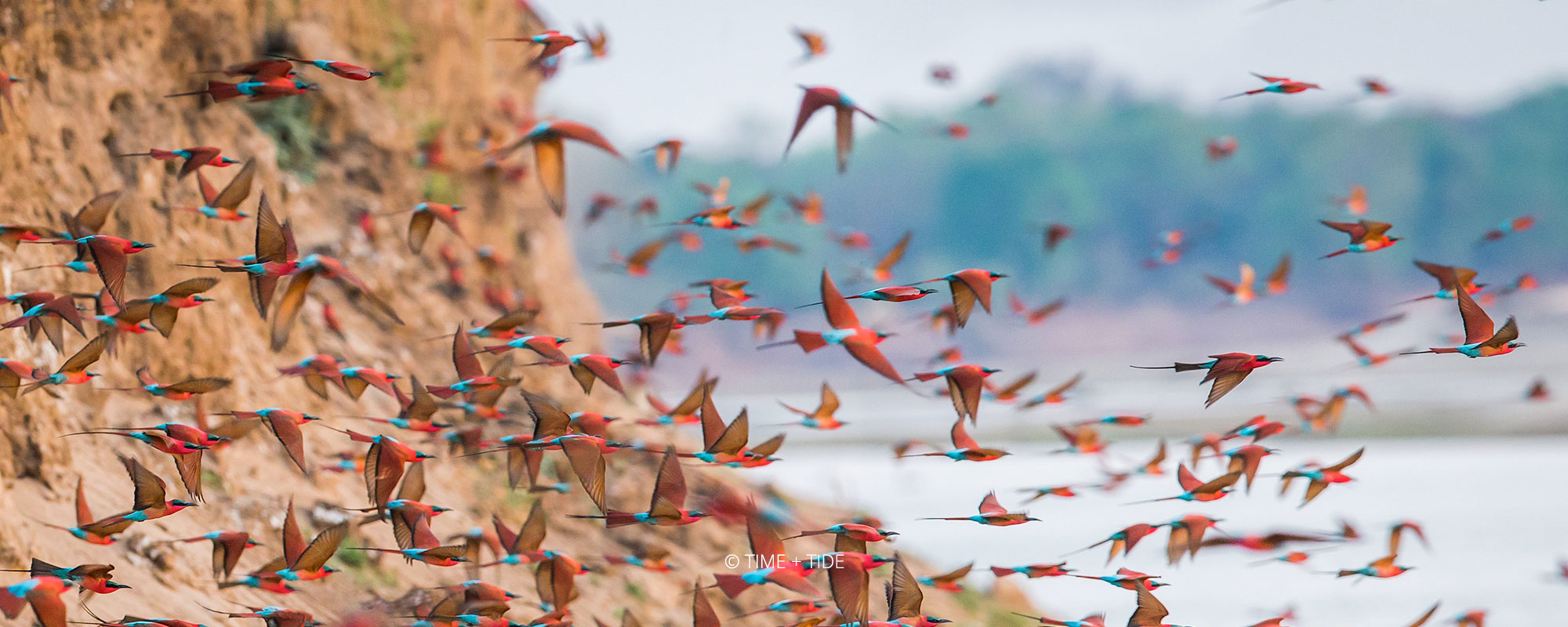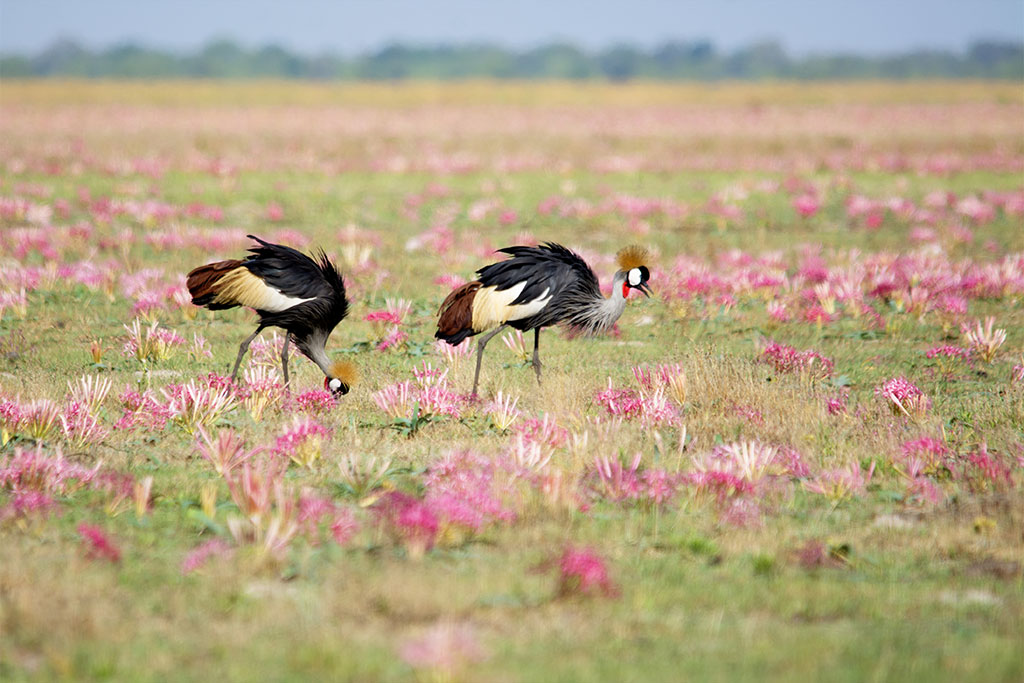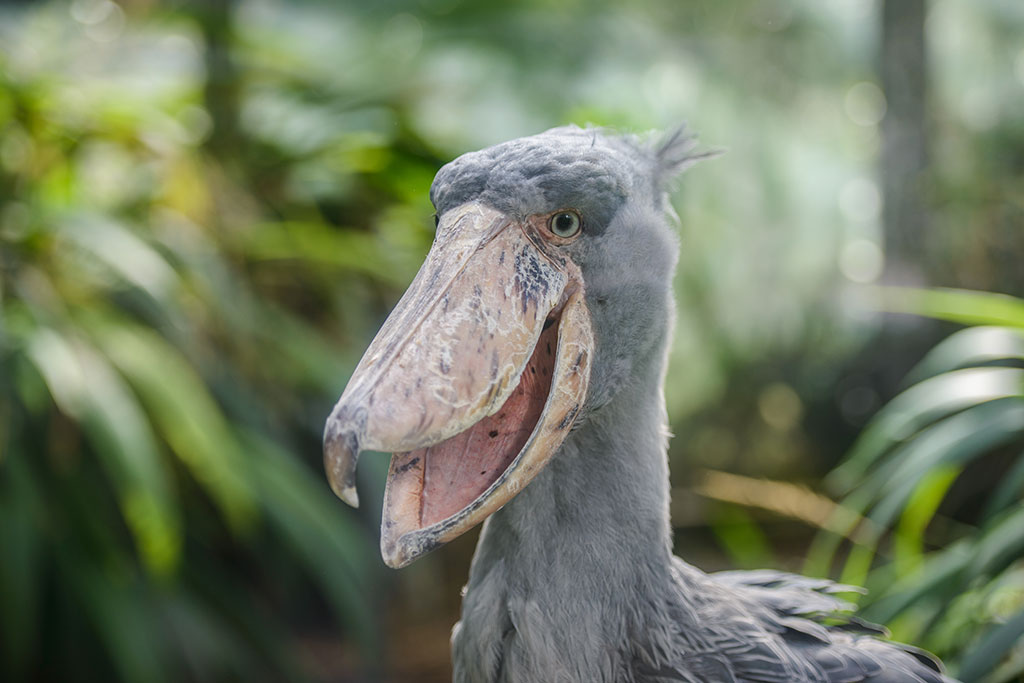Birdlife (original) (raw)
- Home
- What to see
- Where to stay
- What to do
- Plan your Trip
- Travel Agents & Operators
* Zambia
* Europe
* United States
- Zambia
- Map
- News
BIRDS OF ZAMBIA

Even by African standards, Zambia is well-known ornithologically. So far 860 species have been recorded and the country is a hotspot for serious birders chasing the big ticks. For first-timers, there is nothing more thrilling than seeing lilac-breasted rollers, fish eagles, carmine bee-eaters, Lillian’s lovebirds, grey crowned cranes and hornbills. The Zambian barbet is the only truly endemic species while giant shoebill storks – the king of the swamps – can be spotted at Kasanka, South Luangwa and Bangwelulu.
AVIFAUNAL AREAS OF ZAMBIA
To a large extent Zambia’s avifauna is that of the Central African plateau. The vegetation is principally miombo woodland, bisected by grassy dambos along drainage lines. In some areas the miombo is replaced by other woodland types, dry forest or thicket.
Along watercourses there may be riparian forest or, in wetter areas in the north, wet evergreen forest. Most of these habitats have a distinctive set of birds.
Zambia also has low-lying valleys. These include the Luangwa and Middle Zambezi Valleys and the terrain between Lakes Tanganyika and Mweru. A number of birds found in these areas are different from those occurring at higher altitudes.

A very small part of Zambia has montane altitudes. The avifauna here is quite different from that of the rest of the country and includes several species with very limited ranges.
CONSERVATION

Birds are threatened by wildlife trafficking for the pet industry and habitat loss. Among the most at risk are the slaty egret, Cape vulture, lesser kestrel, Taita falcon, corn crake, wattled crane, white-chested tinkerbird, blue swallow and papyrus yellow warbler.
In addition, the Madagascar squacco heron, shoebill, lesser flamingo, pallid harrier, black-winged pratincole, great snipe, Chaplin’s barbet (Zambian barbet), Grimwood’s longclaw and churring cisticola are also extremely vulnerable.
BIRDING HIGH SEASON
Contrary to safari high season, which runs from around July to October, birds are at their height over the wet summer months from November to March. This is because migrant species arrive from the northern hemisphere, boosting numbers considerably. It is also when food is most abundant so chicks are more likely to hatch.
This website uses cookies, Some of the cookies we use are essential for the site to work. By continuing to use our site you agree to us using cookies in accordance with our Cookie Policy. OK
Want to receive the latest
Zambia travel news?
Please subscribe to our newsletter: